Expression, passion, style, persuasion, authenticity.
These five elements encompass a customer success story — a transformation from a regular case study to an enticing piece of content that encourages a reader to explore what your company has to offer.
When people think about writing a case study, they might feel a daunting rise of tediousness, or perhaps writer's block. This article omits both by showing you exactly how to turn a case study into a customer success story through an authentic writing style.
Case studies are more than proving your company's achievements. Through eloquence and thoughtfulness, you can demonstrate your product or service's power by telling a real story.
Think about it: Real customers use your product. Real employees deliver successful projects. Real customers, real professionals, real people.
What does it mean to be human in digital form? It means delivering a story with facts and emotions. It's educating a prospect through a thoughtful perspective, and answering the following questions: How did the client feel at the beginning, and how did they feel at the end? What struggles did the project manager face, and how did they feel when they overcame them?
These questions are part of what encompasses a customer success story.
So how do you make a case study passionate, motivating, and authentic?
Along with the five elements that shape a success story, there are five criteria for forming the facts.
Here, we'll dive into each step you need to take to create an engaging customer success story and convert leads.
1. Find the right client.
First thing's first: finding the right client.
Ask your project management or sales team about their latest projects and which one stood out. You're looking for a client with a uniquely knotty problem, one that your company was able to solve. The more complex the project, the more you can show off your company's skills.
If most of the projects seem standard, pick the client that was the most hands-on and the most responsive. The more involved the client, the more likely they are to give you more information in their interview.
Send an Enticing Email
Before you begin, get permission from the client and inquire about their interest in participating in a case study. You can incentivize them through social media publication, tagging their company on all social platforms, and including a link to their website at the end of the case study.
Here's an example from Trujay that you can use to write an enticing email to your client:
Hi [Name],
My name is [Your Name], I'm a [Job Title/Position] here at [Company Name]. I'm so pleased to hear your experience with us was worth it! We're glad we could make all the needs of your project happen and hope you continue to enjoy the results.
Since your project was such a success, I wondered if you would be interested in participating in a case study. We like to inquire about this opportunity to only a few select customers because we find some projects have a compelling story. Yours happens to be a particularly special project, and we'd love to promote your brand by showcasing the results.
All you would have to do is answer six questions about your experience of working with us. You may answer them directly in response to this email, or we can have a phone or video call. Whatever way you'd prefer! Most of our clients like to copy and paste the questions in response and simply fill in the answers.
If you would like to interview over [Zoom, Google Meet, Skype, Other], let me know a good time and date that works for you. The call shouldn't take more than 30 minutes.
I've attached a few examples of previous success stories to get a feel for the final product. We also conduct a social media campaign so you and your company can get as much exposure as possible.
We thank you for using our services and wish you the best of luck in your future endeavors! Should you ever need our services again, know that [Company Name's] got your back. We hope you find interest in participating and look forward to hearing from you.
Warmest,
[Email Signature]
Once you have permission, let your project management or services team know that a case study is underway.
2. Create interview questions for both project manager and client.
You'll want to create two sets of questions — one for the project manager, and one for the client. These questions will give way to both sides of the story, enlightening you on the experience from both ends.
Client Questions: The Background
The formatting of the client interview questions is essential. You want to get as much detail as you can without overwhelming the client with loaded questions.
Client interview questions are straightforward and relate to a customer's company, goals, passions, and plans. You want to find out how your company solved a significant problem through the clients' perspective. What did the project management team accomplish, in their eyes?
First, get four pieces of standard information:

Here's an example of how you'll use this information in your introductory piece and throughout the success story:
Once you introduce the interviewee and their company clearly and thoughtfully, the client interview questions will shape the rest of your story.
Client Questions: The Real Story
First, you want the client to describe what their previous experience was. What didn't they like about it? What did it do to cause friction in their business process? And most importantly, how was their previous experience not serving their company's needs?
Next, you want to get the facts. What was the name of their previous service provider, and what made them switch? How did they find your company? Was it a referral, a Google search, or something else?
By knowing how the client found your company, you'll know which of your marketing efforts are working and which need improvement. For example, if the client found your company through a keyword search, that means your SEO strategy is working. Alternatively, if the client found your company by referral, that means your reputation is credible by word-of-mouth.
Below are six questions you can ask your clients:
- What company and/or product were you previously using, and what were the issues?
- What special requirements did you have that the previous company lacked in delivering?
- Which solution did you switch to, and what made you choose it?
- How did you find the new company/solution?
- What was your experience throughout the project? (Orientation, beginning stages, experience with your account manager, understanding the tech if applicable, etc.)
- How were you satisfied with the results, and what was your favorite part? (Could be anything from communication to a more technical logic.)
Project Manager Questions
The project manager questions should inform you of the entire technical and onboarding process. These questions aim to prove technical savviness and expertise, showing the reader that your product or service works excellently.
Below are four interview questions you could ask the project manager or technician in charge of the account:
- What were the challenges the client was facing? Is there a main one in particular? Be as detailed as possible over what problems the client had, including but not limited to their project experience, current issues, and dislikes.
- What were the biggest challenges of this project, and what did you find most challenging in solving the problem? Were there complications you have or have not seen before? Be descriptive.
- What did you recommend, and how did you know to suggest that plan? Was there anything peculiar about their use case, or was it pretty standard? How do you know what actions to take for a specific project, precisely the one in question?
- What was the execution plan, and how did you use it to satisfy the client's needs?
Make sure you're interviewing the team leader of the project and other colleagues who worked on it. You'll want to do this to make sure you get the whole story and the perspectives of everyone involved. The more information you have, the easier it will be to write the story.
When interviewing the project management team, analyze their responses in a marketable way. What about their answers gives appeal, and where is the sweet spot for authenticity?
Every project is unique, even if there is a standard method in place. It's the client's problem that makes the project unique, and how the services team solved that very problem to the fullest extent.
Below is an example of how you can integrate the project manager responses into a well-written overview of the problem and its challenges:
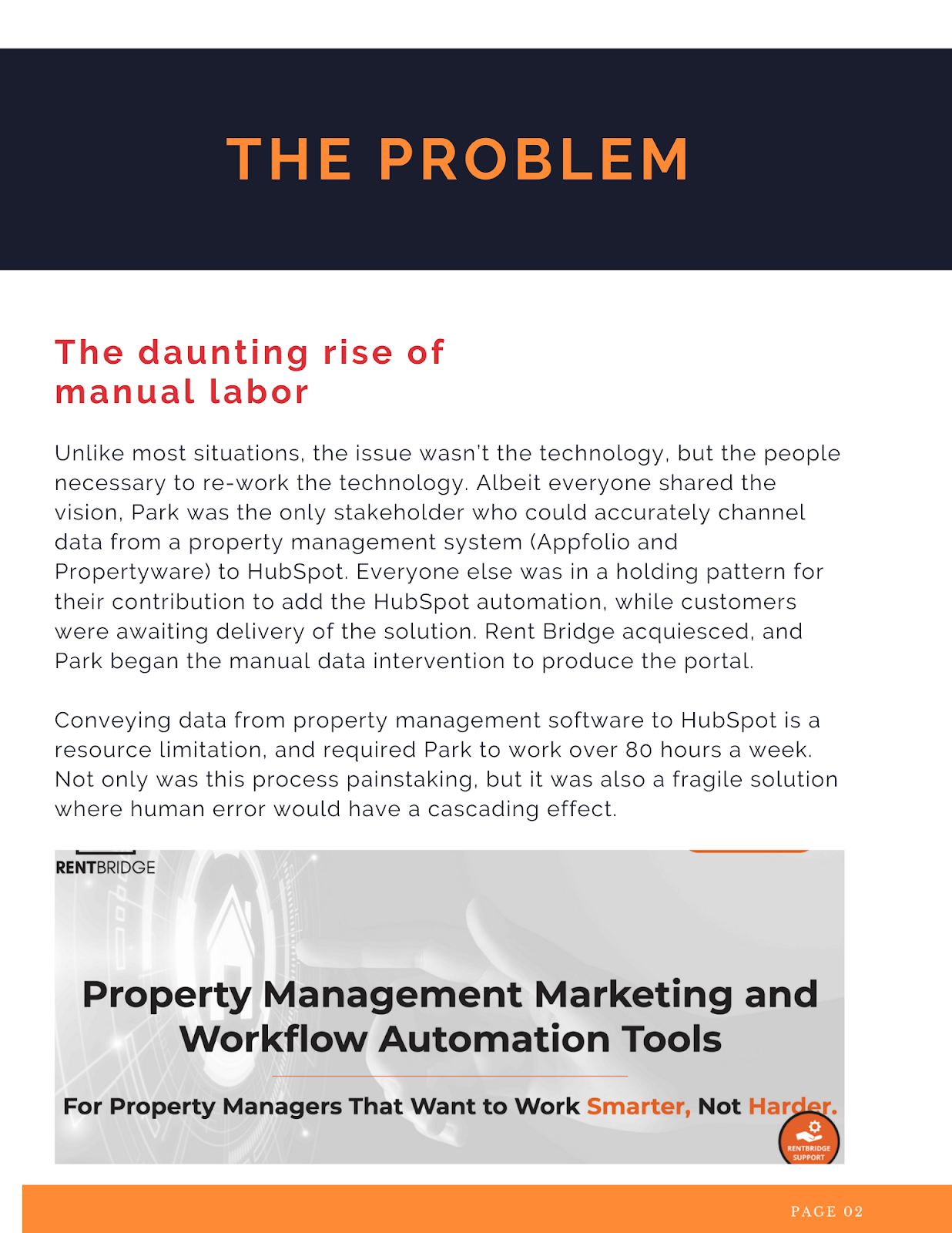
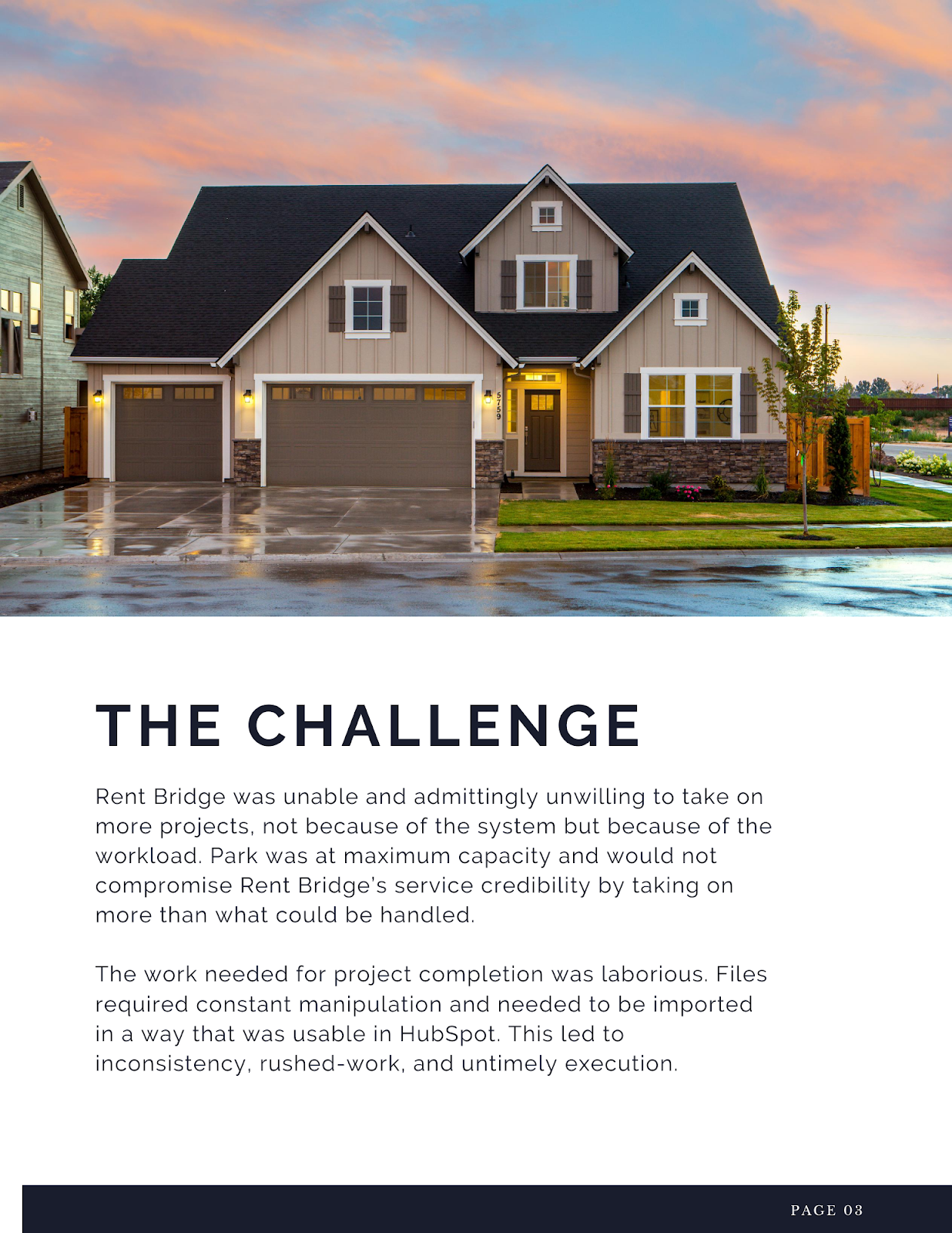
3. Tell the story using a standard outline.
The responses to your interview questions don't necessarily need to be in a particular order. You can either start with the project manager or client questions.
Let's say you get the client's responses first. What are you looking for, exactly?
You're looking for the message behind their words. Some call it reading between the lines. I call it the sweet spot of authenticity. What about their responses jumps out at you? Here is an excellent place to know your buyer personas and identify what kind of client they are.
After reviewing both sets of interview responses, try telling the story to yourself from beginning to end using the questions below. In your own words, speak the story out loud. Doing so will turn fact into fiction and organize your written outline.
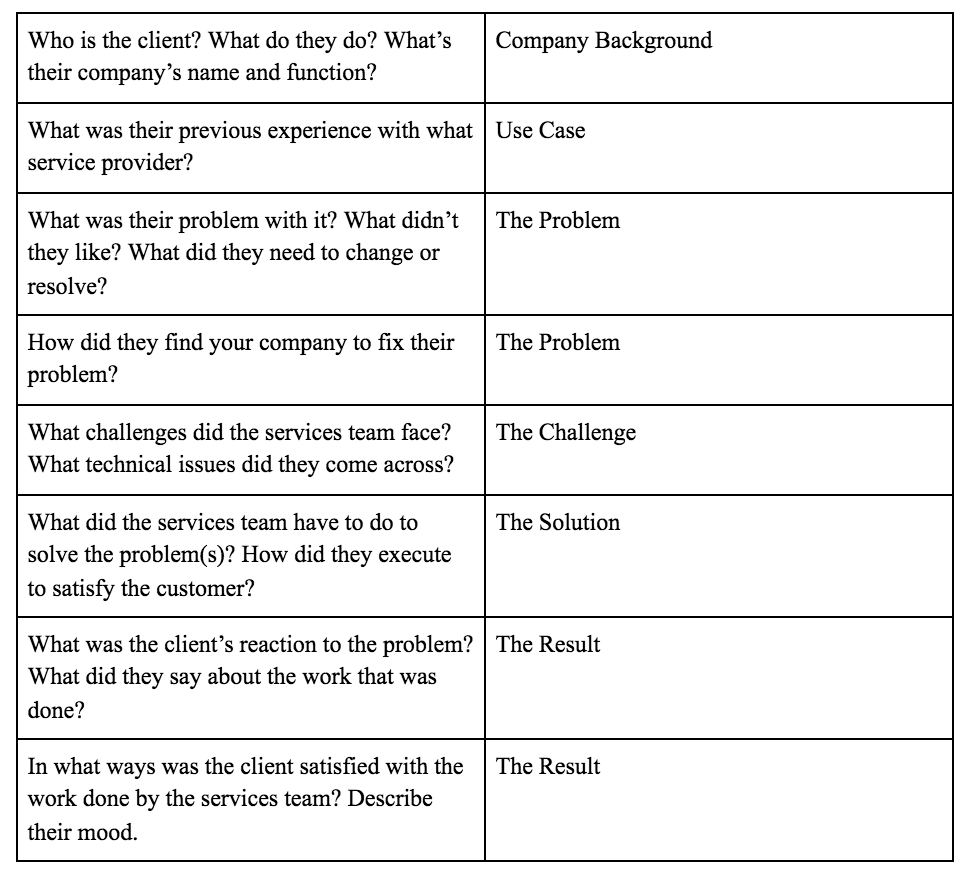
Place Quotes in Your Outline
Quotes from the client are paramount. Words that come directly from the source are vital to proving your company can achieve results and make customers feel cared for. The more quotes you have, the better you can showcase your customer's achievements.
Quotes of high-quality give prospects significant confidence in choosing your services — almost as much as referrals. The quotes should never be modified unless using proper quotation rules.
Below are examples of strong quotes:
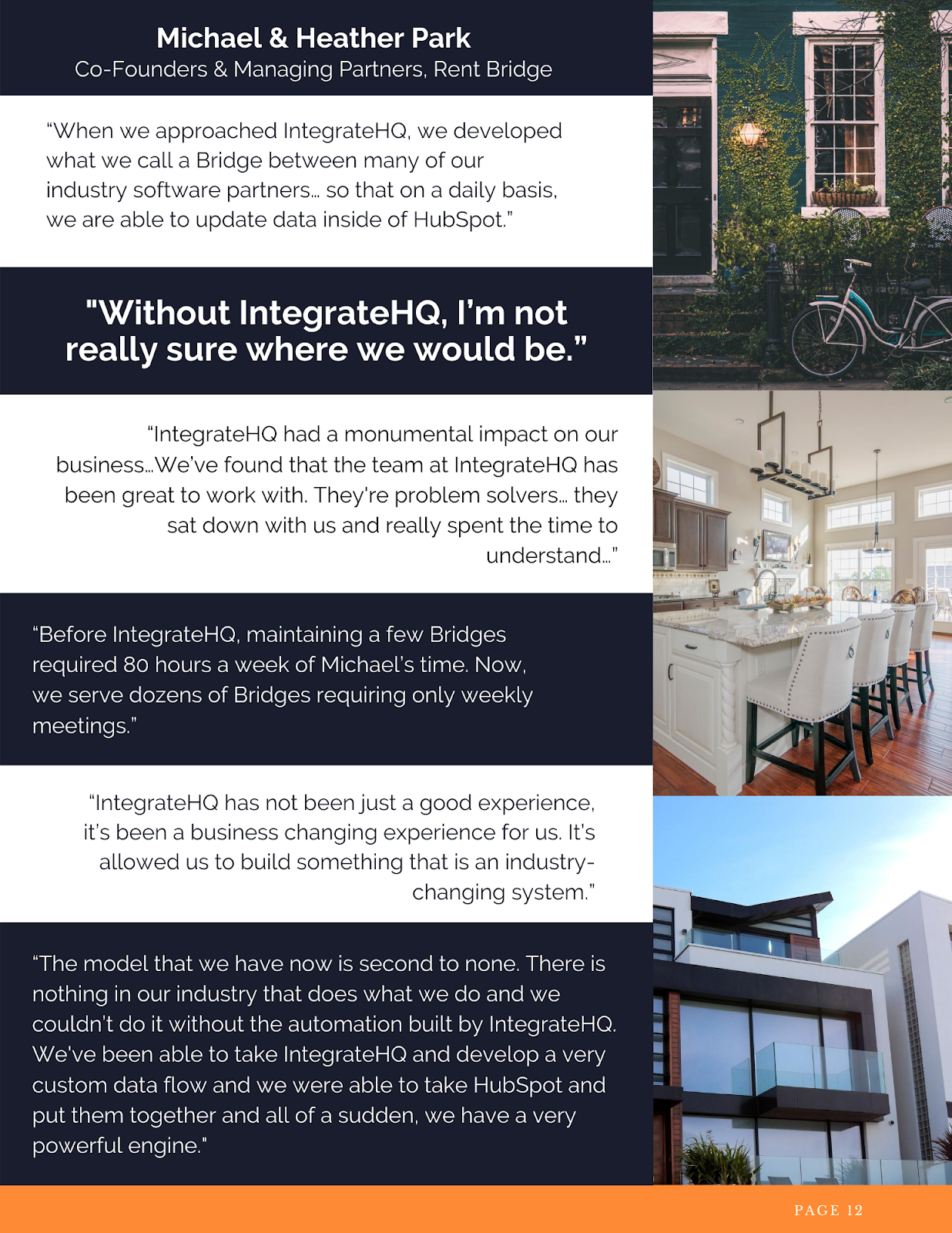
Ask for Video Testimonials
If and when possible, getting video testimonials from your client can make your story go above-and-beyond. If the video content editing is just right, you can move your readers in a heartfelt way. That might sound odd, so take a look at the video below. It could very well be the beacon of your success story and the element that sets it apart, like this example from HubSpot, below:
Testimonials of this kind of caliber make your success story real. Additionally, consider placing quotes in various and relevant areas of your success story — you can have a quote for each one of the aspects that make up a standard, outlined case study.
4. Use concise, clear language to tell a story.
You don't need to use fancy jargon to create a compelling customer success story — in fact, it's preferred that you don't. You'll want to make it so the reader can clearly understand how your company helped solve a client's problem, which doesn't require superfluous language.
Here's an excerpt that's written clearly, and without jargon:
James felt that [company 1] had way more "bells and whistles,” which can be extremely healthy for some companies. In James's case, however, he was only using a fraction of the features. Sometimes, too much of anything is never a good thing. Just because a system has more features doesn't mean it will serve a specific company to its highest degree. Sometimes, less is more, and for James, "it was time to change."
5. Design your story for visual appeal.
Ultimately, visuals are powerful opportunities to support and strengthen your story.
If you want to persuade prospects that your company is the right choice for them, you'll want to have a well-written story, but you'll also want to create visually-appealing materials to help support the story.
Design applications like Canva are great for combining text with imagery. Create beautiful and eye-catching case study e-book covers, or create designs to highlight quotes throughout the piece. Alternatively, consider using images related to the client and company — with permission, you might even consider using clients' LinkedIn photos to put a face to the text.
Here are some examples of customer success stories with a design for visual appeal:
1. CoSchedule Customer Success Story: UMass Memorial Health Care
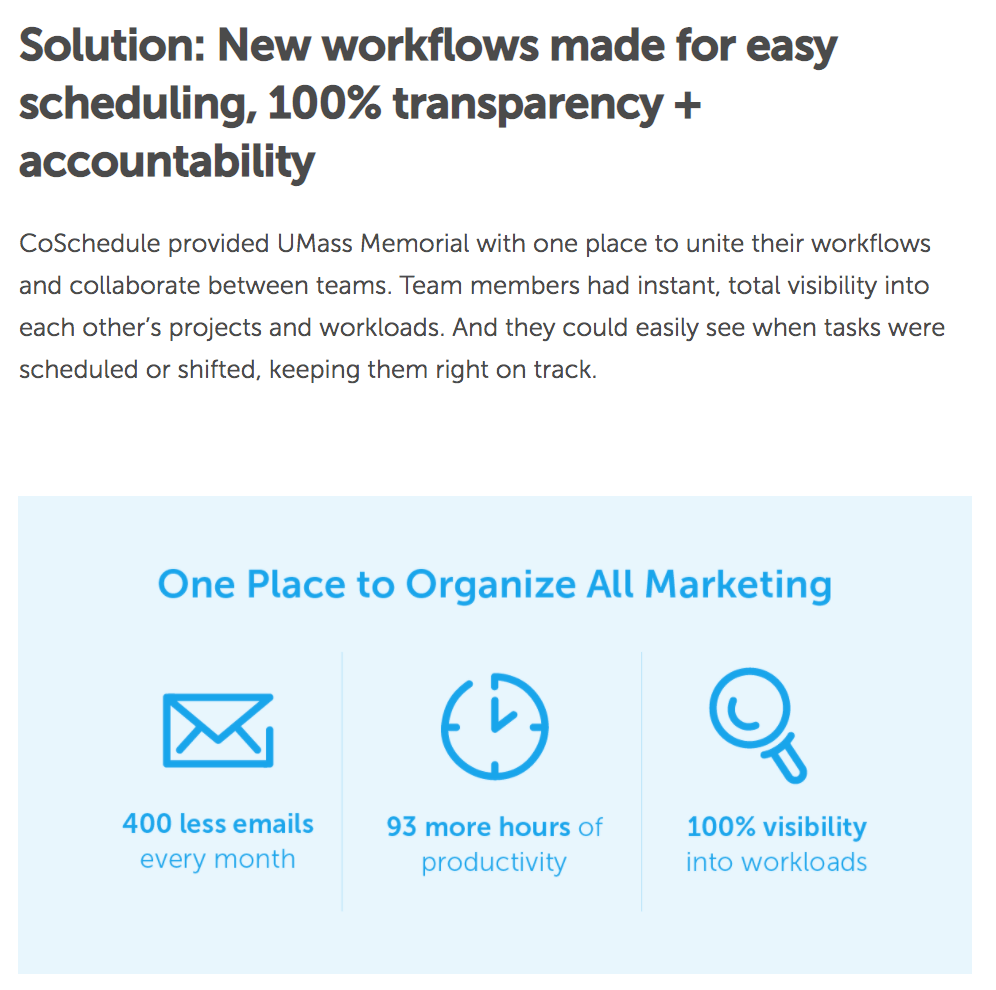
2. Lightico Customer Success Story: A1 Comms
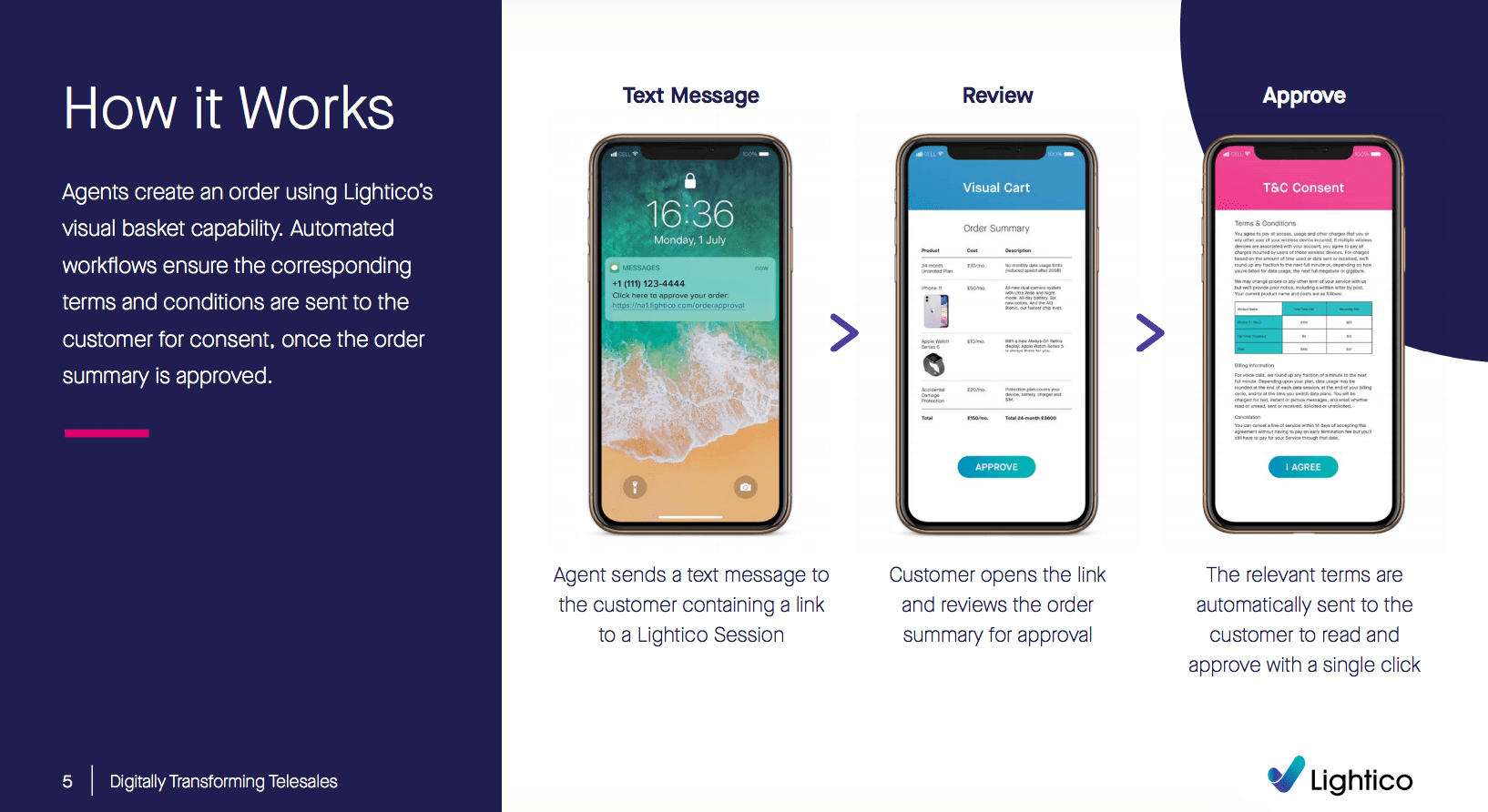
3. Hourly.io Customer Success Story: Izzy's Brooklyn Bagels
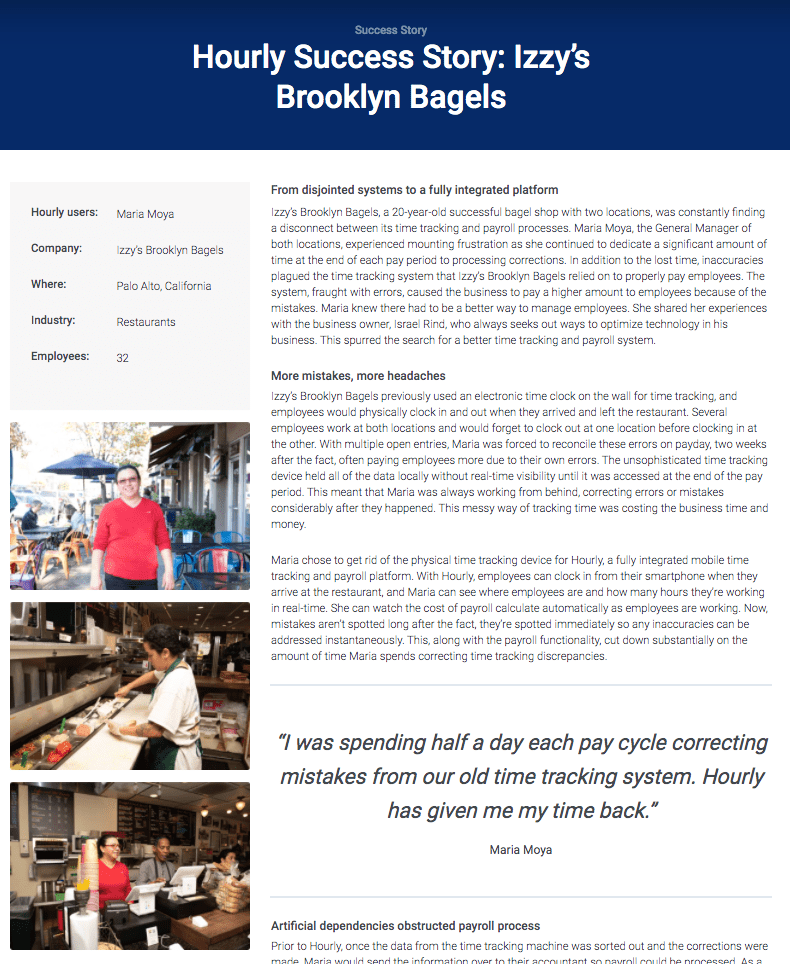
Case studies work to showcase a company's function to the fullest degree. They represent the facts of what happened, who was involved, and what the outcome was.
The main goal of a case study is to earn prospective customers' trust and motivate them to choose you over your competitors.
Turning a case study into a customer success story is done through a meticulous and investigative process.
Now that you have everything you need to get started, design a visually appealing piece of content that gives the reader more than just words, but sparks their imagination of what it would be like to work with your company. They'll want to reap the benefits of your services — and may even become the star of your next customer success story.
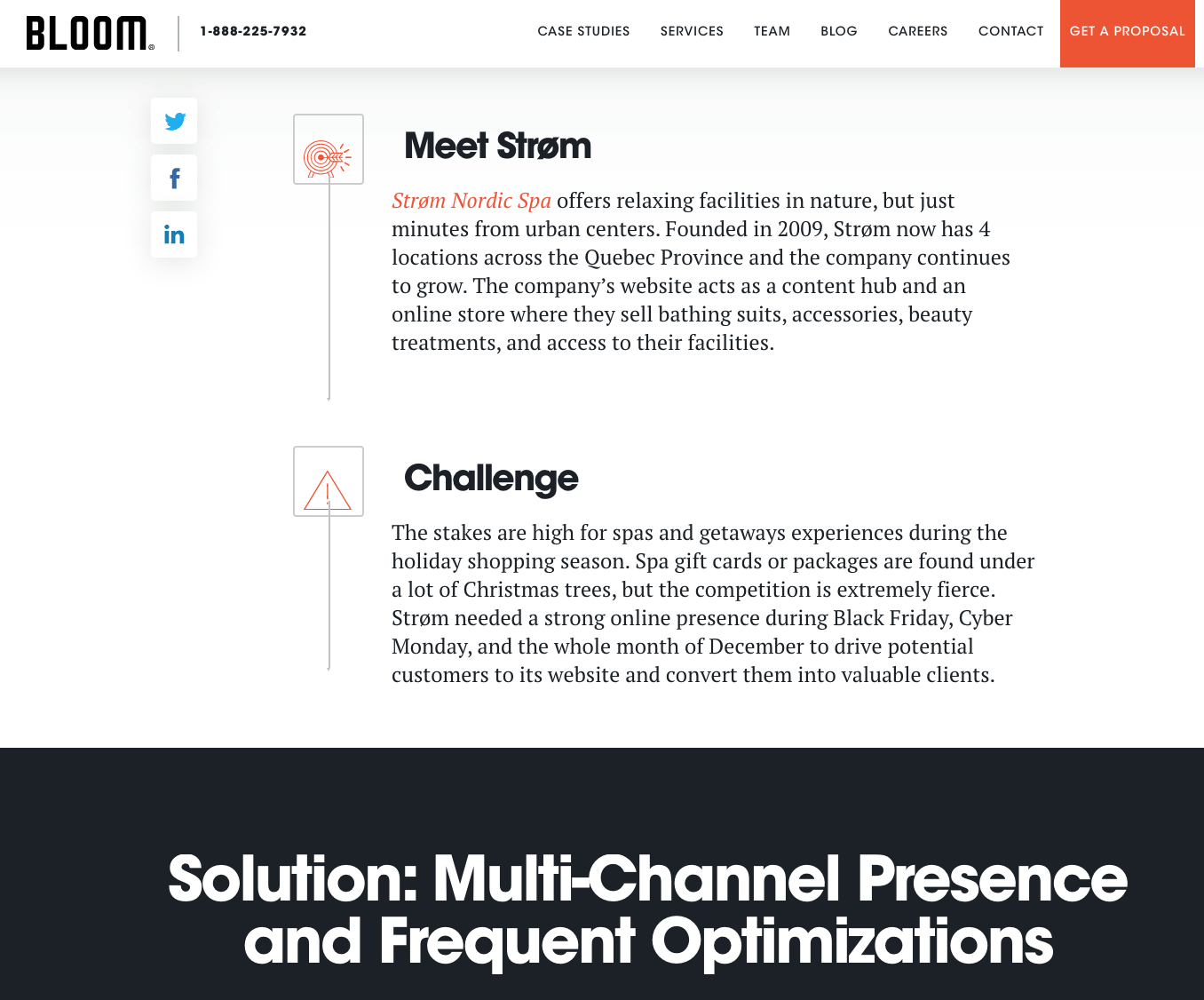
No comments:
Post a Comment